Tracking Control for Output Probability Density Function of Stochastic Systems Using FPD Method
Abstract
1. Introduction
- 1
- The linear B-spline model is implemented to characterise the system PDF, thus converting the PDF shape control problem into the weight control problem;
- 2
- The PDF model error is represented as multiplicative noise, indicating the stochasticity and dynamics of the weight error;
- 3
- The dynamics of the weights are characterised by the stochastic state space model, thus providing full stochastic properties;
- 4
- The extended FPD is applied to better cope with the multiplicative noises existing in the dynamics of the weight model. Compared with the conventional FPD [29], the extended FPD can better cope with multiplicative noises by modifying the Riccati equations. Moreover, we improved the extended FPD in [12] so that the system state can track the time-varying targets.
2. Problem Description
2.1. PDF Description Based on B-Spline
2.2. PDF Tracking Control Problem
3. Control Algorithm
3.1. General Control Solution of FPD
3.2. FPD Control Solution for the Weight Dynamic System
| Algorithm 1: Tracking control framework with output probability density function. |
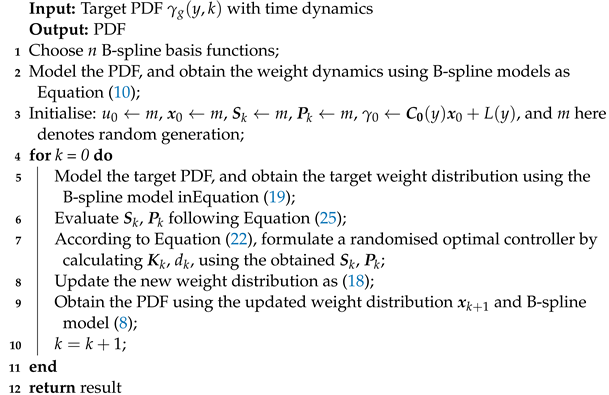 |
4. Simulation Result
5. Conclusions
Author Contributions
Funding
Institutional Review Board Statement
Informed Consent Statement
Data Availability Statement
Conflicts of Interest
References
- Ren, M.; Zhang, Q.; Zhang, J. An introductory survey of probability density function control. Syst. Sci. Control Eng. 2019, 7, 158–170. [Google Scholar] [CrossRef]
- Filip, I.; Dragan, F.; Szeidert, I.; Albu, A. Minimum-variance control system with variable control penalty factor. Appl. Sci. 2020, 10, 2274. [Google Scholar] [CrossRef]
- Li, M.; Zhou, P. Predictive PDF control of output fibre length stochastic distribution in refining process. Acta Autom. Sin. 2019, 45, 1923–1932. [Google Scholar]
- Sun, X.; Xun, L.; Wang, H.; Dong, H. Iterative learning control of singular stochastic distribution model of jet flame temperature field. J. Beijing Univ. Technol. 2013, 33, 523–528. [Google Scholar]
- Cao, L.; Wu, H. MWD modelling and control for polymerization via B-spline neural network. J. Chem. Ind. Eng. China 2004, 55, 742–746. [Google Scholar]
- Zhang, Q.; Zhou, Y. Recent advances in non-Gaussian stochastic systems control theory and its applications. Int. J. Netw. Dyn. Intell. 2022, 1, 111–119. [Google Scholar] [CrossRef]
- Wang, H.; Yue, H. Output PDF control of stochastic distribution systems: Modelling control and applications. Control Eng. China 2003, 10, 193–197. [Google Scholar]
- Wang, H.; Zhang, J. Bounded stochastic distributions control for pseudo-ARMAX stochastic systems. IEEE Conf. Decis. Control 2001, 46, 486–490. [Google Scholar] [CrossRef]
- Wang, H. Bounded Dynamic Stochastic Systems: Modelling and Control, 1st ed.; Springer Science & Business Media: London, UK, 2000; pp. 15–34. [Google Scholar]
- Wang, L.; Xie, G.; Qian, F.; Shangguan, A. Developing an innovative method to control the probability density function shape of the state response for nonlinear stochastic systems. Int. J. Robust Nonlinear Control 2021, 31, 7904–7919. [Google Scholar] [CrossRef]
- Zhou, J. PDF Control and Its Application in Filtering; Institute of Automation, Chinese Academy of Sciences: Beijing, China, 2005. [Google Scholar]
- Zhou, Y.; Herzallah, R.; Zafar, A. Fully probabilistic design for stochastic discrete system with multiplicative noise. In Proceedings of the 2019 IEEE 15th International Conference on Control and Automation (ICCA), Edinburgh, UK, 16–19 July 2019; Volume 19138868, pp. 940–945. [Google Scholar]
- Ma, J.; Yang, X.; Sun, S. Distributed fusion estimation for multi-sensor systems with time-correlated multiplicative noises. Acta Autom. Sin. 2021, 47, 1–13. [Google Scholar]
- Huang, E.; Cheng, Y.; Hu, W. Tracking control of multi-agent systems based on reset control. Control Eng. China 2022, 1–7. [Google Scholar]
- Zhou, J.; Wang, H. Optimal tracking control of the output probability density functions: Square root B-spline model. Control Theory Appl. 2005, 22, 369–376. [Google Scholar]
- Luan, X.; Liu, F. Finite time stabilization of output probability density function of stochastic systems. Control Decis. 2009, 24, 1161–1166. [Google Scholar]
- Herzallah, R. Fully probabilistic control for stochastic nonlinear control systems with input dependent noise. Neural Netw. 2015, 63, 199–207. [Google Scholar] [CrossRef]
- Herzallah, R.; Zhou, Y. A fully probabilistic control framework for stochastic systems with input and state delay. Sci. Rep. 2022, 12, 7812. [Google Scholar] [CrossRef]
- Wang, H.; Afshar, P.; Yue, H. ILC-based generalised PI control for output pdf of stochastic systems using LMI and RBF neural networks. In Proceedings of the 45th IEEE Conference on Decision and Control, San Diego, CA, USA, 13–15 December 2006; pp. 5048–5053. [Google Scholar]
- Zhou, P.; Liu, J. Data-driven multi-output ARMAX modelling for online estimation of central temperatures for cross temperature measuring in blast furnace ironmaking. Acta Autom. Sin. 2018, 44, 552–561. [Google Scholar]
- Wang, H. Multivariable output probability density function control for non-Gaussian stochastic systems using simple MLP neural networks. In Proceedings of the IFAC International Conference on Intelligent Control Systems and Signal Processing, Algarve, Portugal, 8–11 April 2003; pp. 84–89. [Google Scholar]
- Kabore, P.; Baki, H.; Wang, H. Linearized controller design for the output pdfs using square root based B-spline models. In Proceedings of the 15th IFAC World Congress, Barcelona, Spain, 21–26 July 2002; pp. 2694–2699. [Google Scholar]
- Wang, H.; Yue, H. A rational spline model approximation and control of output probability density functions for dynamic stochastic systems. Trans. Inst. Meas. Control 2003, 25, 93–105. [Google Scholar] [CrossRef]
- Zhou, J.; Yue, H.; Wang, H. Shaping of output pdf based on the rational square-root b-spline model. Acta Autom. Sin. 2005, 31, 343–351. [Google Scholar]
- Girosi, F.; Poggio, T. Networks and the best approximation property. Biol. Cybern. 1990, 63, 169–176. [Google Scholar] [CrossRef]
- Wang, H.; Zhang, J.; Yue, H. Multi-step predictive control of a PDF-shaping problem. Acta Autom. Sin. 2005, 31, 274–279. [Google Scholar]
- Chen, M. Studies of Numerically Stable Estimation for Multi-Channel Systems with Multiplicative Noises; Ocean University of China: Shandong, China, 2004. [Google Scholar]
- Yin, Y.; Luo, S.; Wan, T. Model-free optimal tracking control for linear discrete-time stochastic systems subject to additive and multiplicative noises. Control Theory Appl. 2022, 39, 1–10. [Google Scholar]
- Kárný, M. Towards fully probabilistic control design. Automatica 1996, 32, 1719–1722. [Google Scholar] [CrossRef]
- Herzallah, R.; Kárný, M. Fully probabilistic control design in an adaptive critic framework. Neural Netw. 2011, 24, 1128–1135. [Google Scholar] [CrossRef] [PubMed]
- Zha, W.; Li, D.; Shen, L.; Zhang, W.; Liu, x. Review of neural network-based methods for solving partial differential equations. Chin. J. Theor. Appl. Mech. 2022, 54, 543–556. [Google Scholar]
- Yang, H.; Xu, X. Multi-sensor technology for B-spline modelling and deformation analysis of composite structures. Compos. Struct. 2019, 224, 111000. [Google Scholar] [CrossRef]
- Zhang, Y.; Zhou, P.; Lv, D.; Zhang, S.; Cui, G.; Wang, H. Inverse calculation of burden distribution matrix using B-spline model based PDF control in blast furnace burden charging process. IEEE Trans. Ind. Inform. 2023, 19, 317–327. [Google Scholar] [CrossRef]
- Kárný, M. Axiomatisation of fully probabilistic design revisited. Syst. Control Lett. 2020, 141, 104719. [Google Scholar] [CrossRef]
- Shi, S. Sensing Optimization Design of UAV Electric Actuator Operation State; Harbin Institute of Technology: Harbin, China, 2020. [Google Scholar]
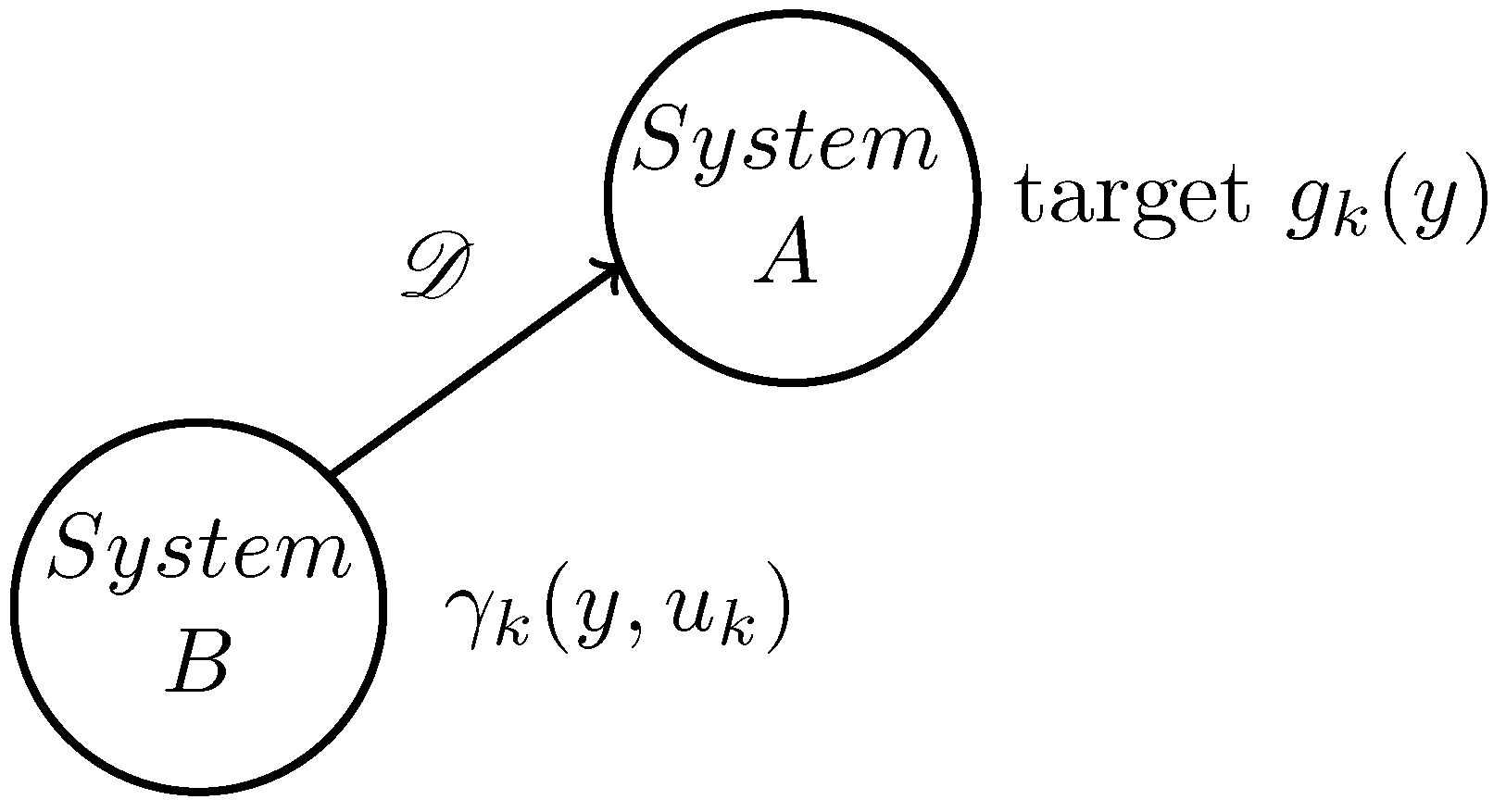

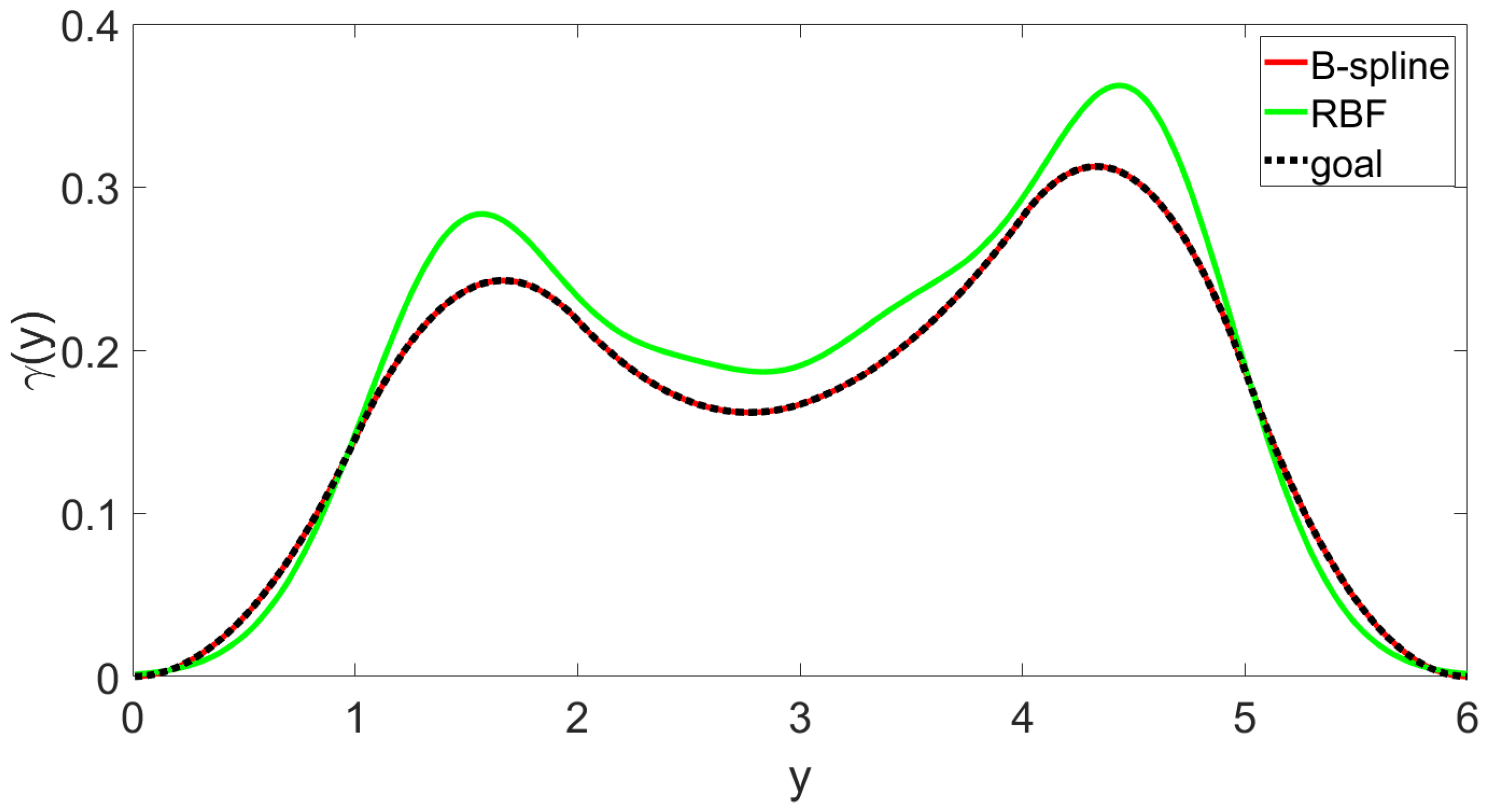
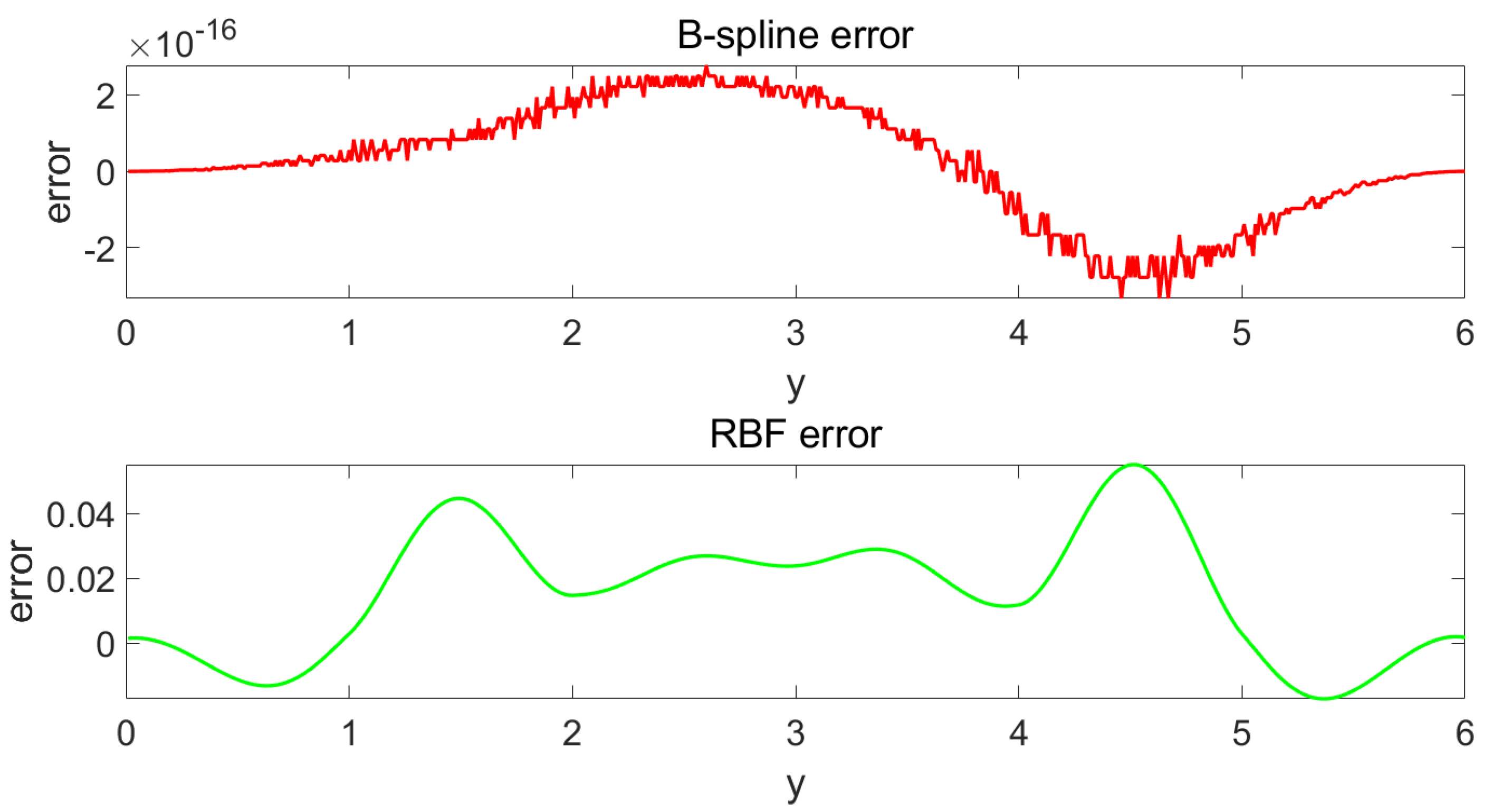
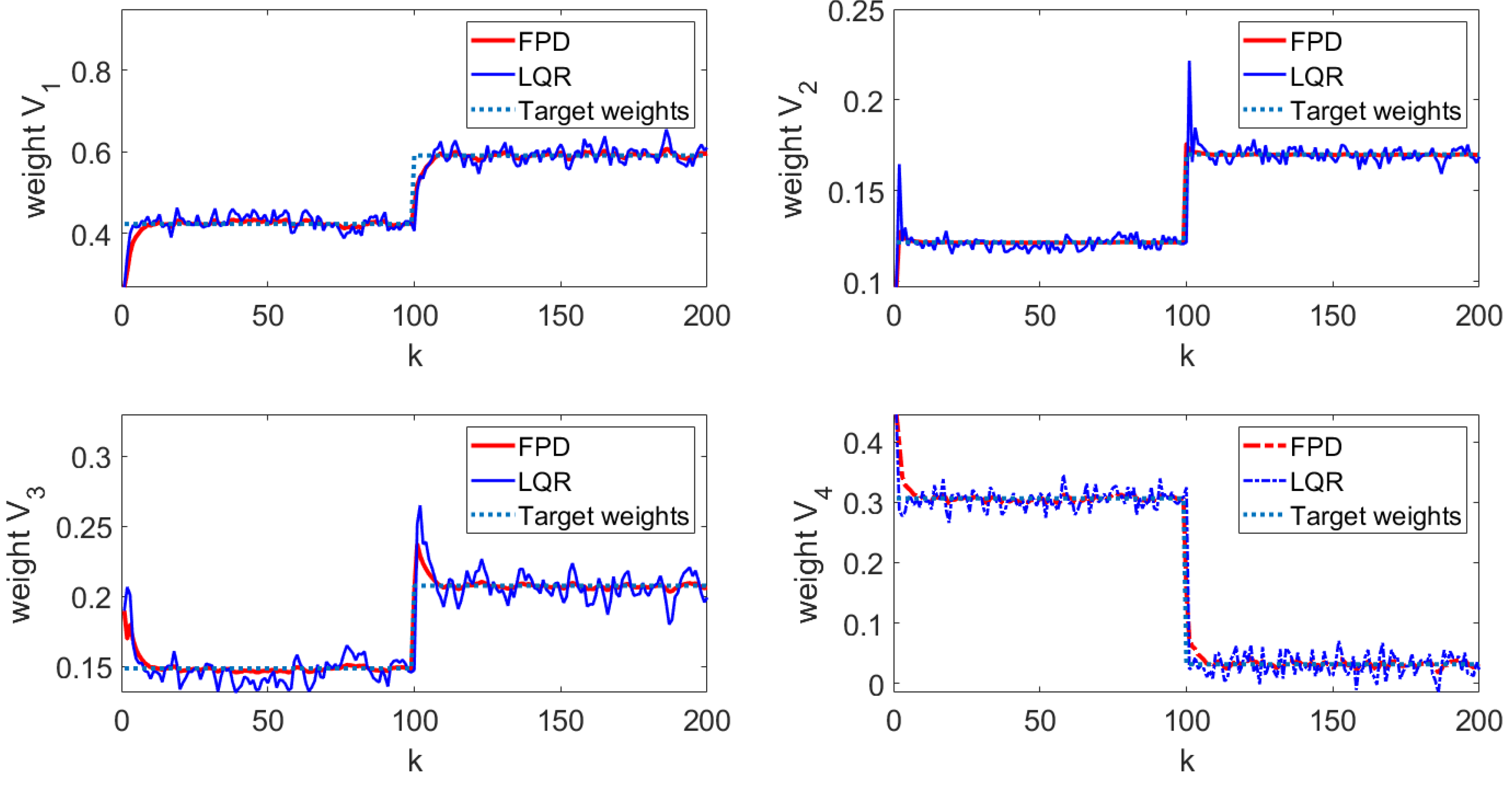

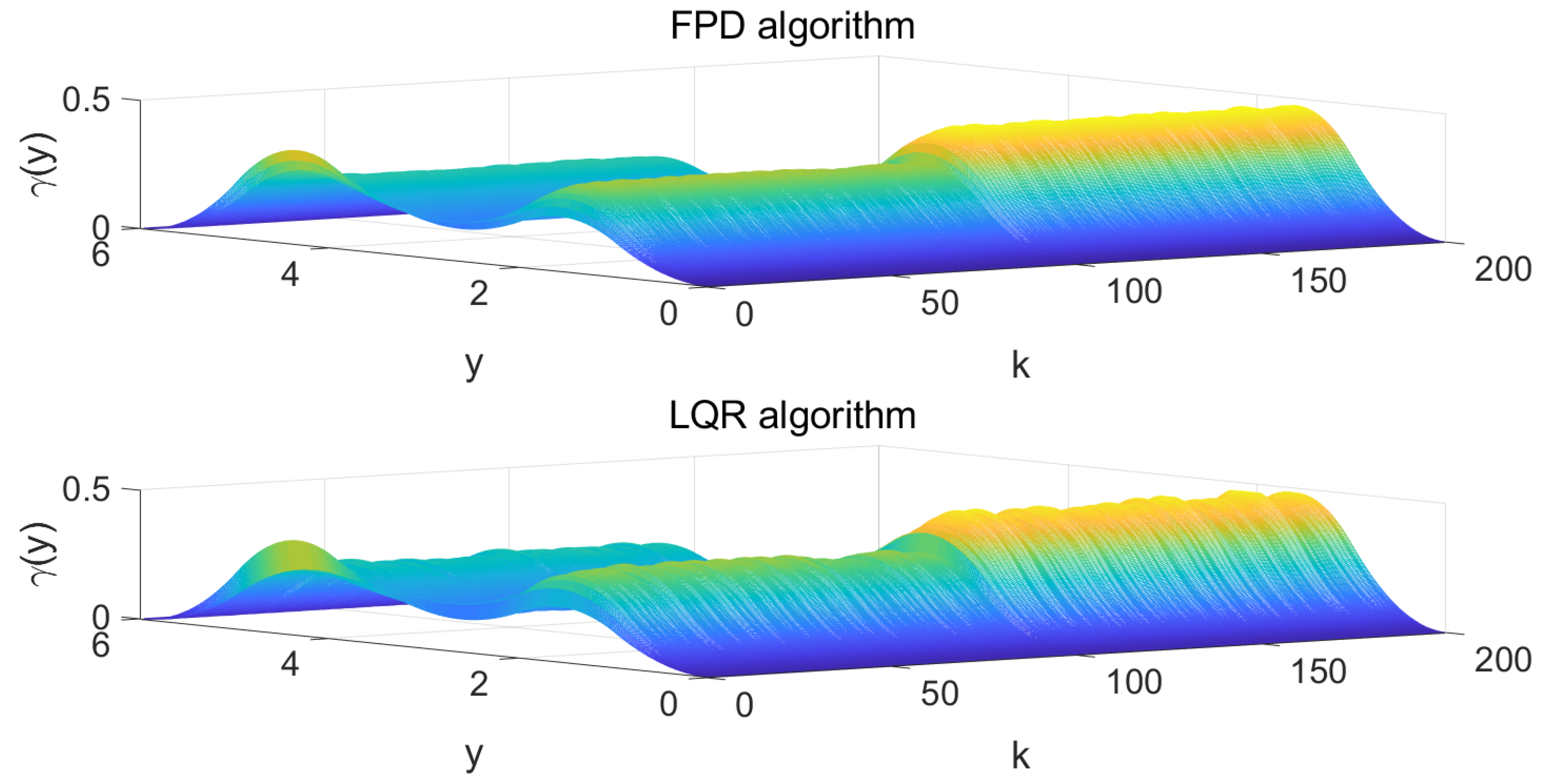
Disclaimer/Publisher’s Note: The statements, opinions and data contained in all publications are solely those of the individual author(s) and contributor(s) and not of MDPI and/or the editor(s). MDPI and/or the editor(s) disclaim responsibility for any injury to people or property resulting from any ideas, methods, instructions or products referred to in the content. |
© 2023 by the authors. Licensee MDPI, Basel, Switzerland. This article is an open access article distributed under the terms and conditions of the Creative Commons Attribution (CC BY) license (https://creativecommons.org/licenses/by/4.0/).
Share and Cite
Yang, Y.; Zhang, Y.; Zhou, Y. Tracking Control for Output Probability Density Function of Stochastic Systems Using FPD Method. Entropy 2023, 25, 186. https://doi.org/10.3390/e25020186
Yang Y, Zhang Y, Zhou Y. Tracking Control for Output Probability Density Function of Stochastic Systems Using FPD Method. Entropy. 2023; 25(2):186. https://doi.org/10.3390/e25020186
Chicago/Turabian StyleYang, Yi, Yong Zhang, and Yuyang Zhou. 2023. "Tracking Control for Output Probability Density Function of Stochastic Systems Using FPD Method" Entropy 25, no. 2: 186. https://doi.org/10.3390/e25020186
APA StyleYang, Y., Zhang, Y., & Zhou, Y. (2023). Tracking Control for Output Probability Density Function of Stochastic Systems Using FPD Method. Entropy, 25(2), 186. https://doi.org/10.3390/e25020186




